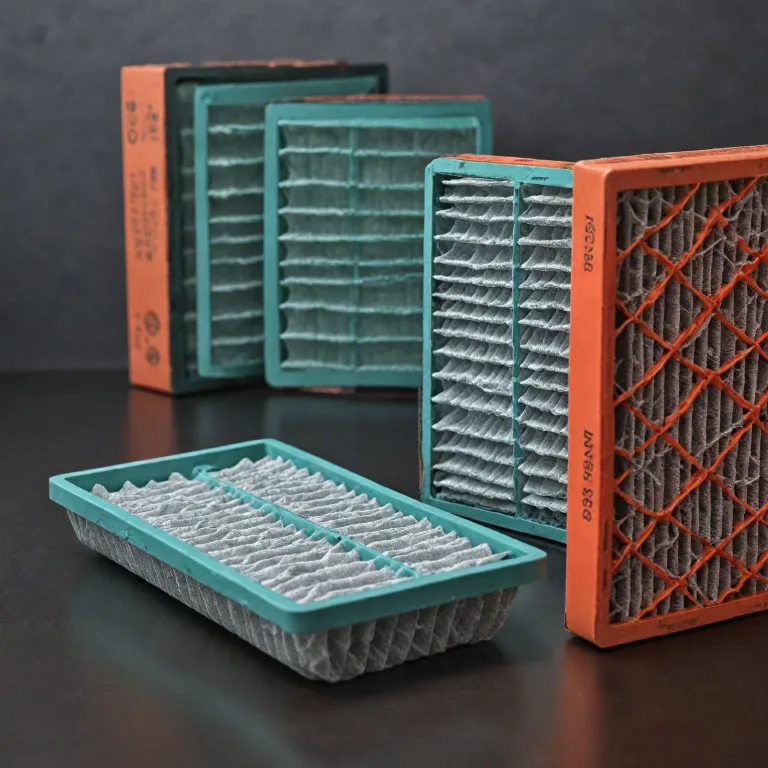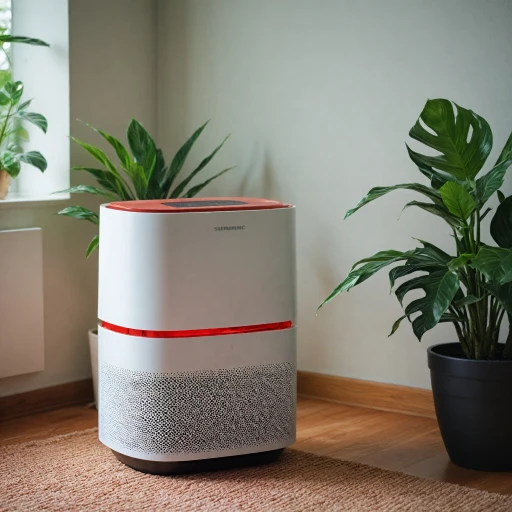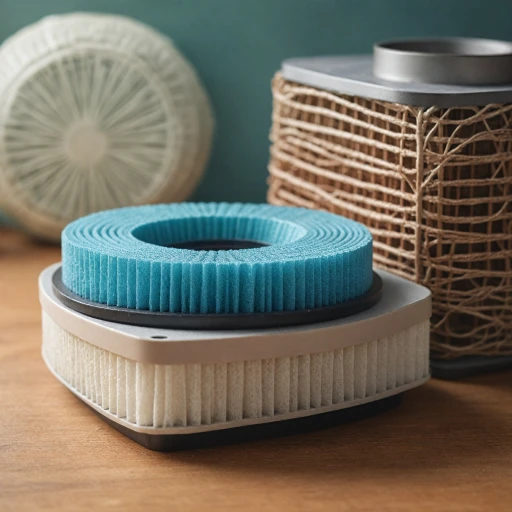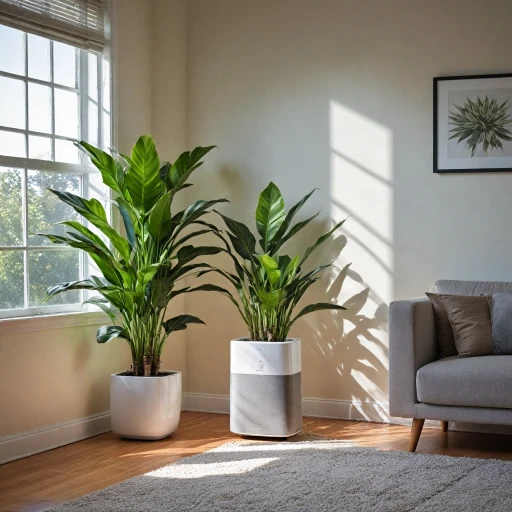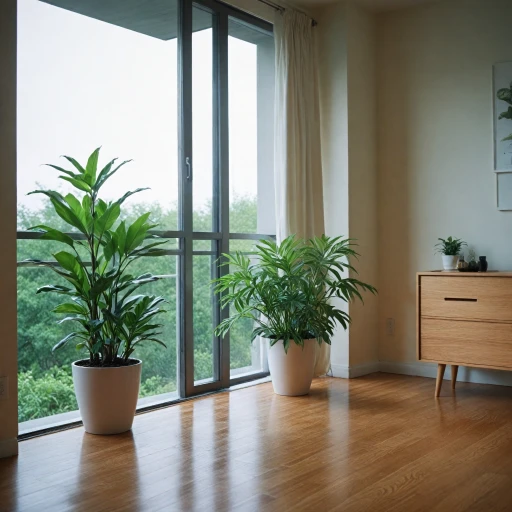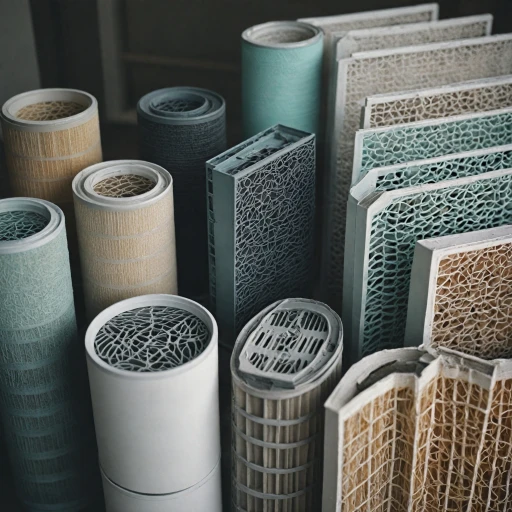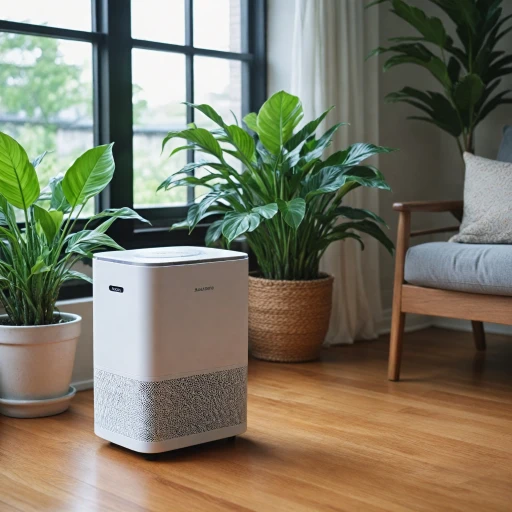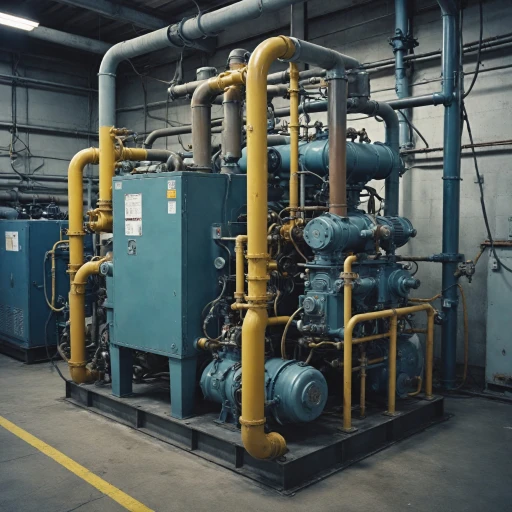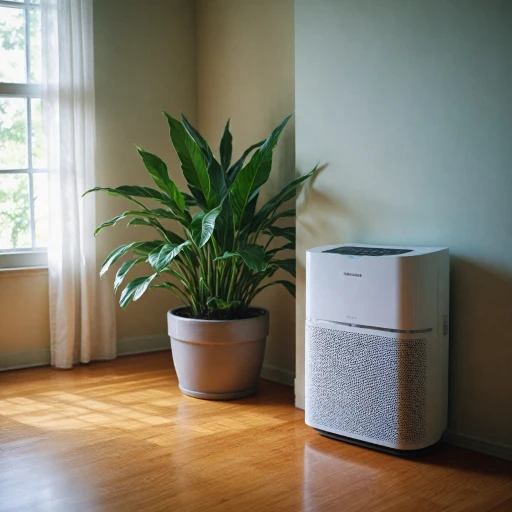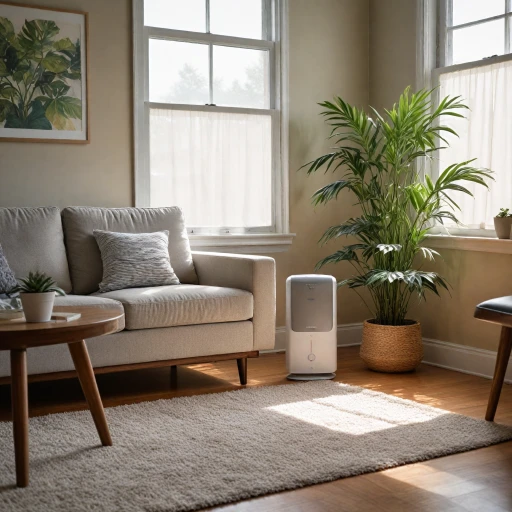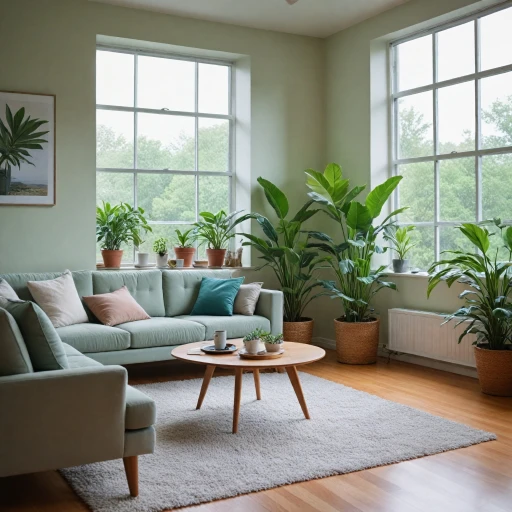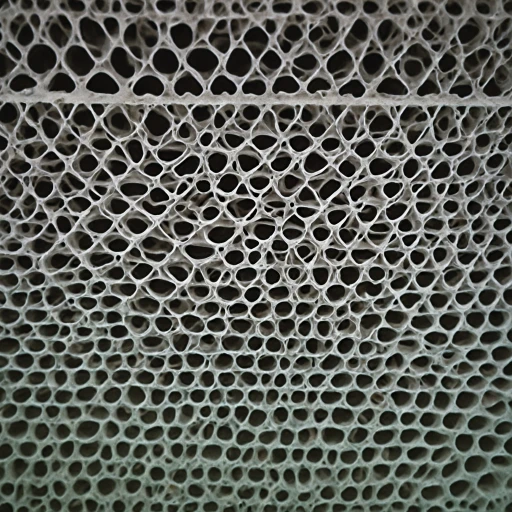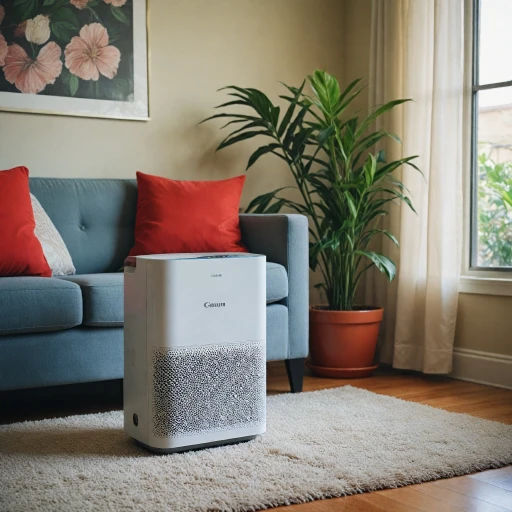
What is a Standard Air Filter Size?
Grasping the Basics of Filter Dimensions
When diving into the world of air purifiers, one of the first terms you will encounter is the concept of standard air filter sizes. Understanding what makes a filter "standard" is crucial for maintaining optimal air quality and ensuring your HVAC system functions efficiently.
In general, standard filter sizes refer to filters with commonly accepted measurements that fit most HVAC systems and furnaces. These sizes are usually expressed in inches and cover a wide range of dimensions, tailored to work with various systems. They are often categorized by nominal size, which indicates rounded-off dimensions for ease of reference. However, it is important to note that nominal size may slightly differ from the filter's actual size—an aspect worth considering when selecting the right fit.
The importance of replacing air filters can't be overstated. Regularly altering your filters ensures your system operates without obstruction and helps maintain a healthier indoor environment. Knowing the correct filter size enhances this process, as a filter that fits well prevents unfiltered air from bypassing the system. Adhering to the proper standard size also aids in selecting filters with an appropriate MERV rating that matches your home's specific needs.
Exploring further, it becomes evident why certain sizes have become the norm and their range of applications. Proper measurement of your air filter is key to avoiding mishaps which could potentially compromise air quality. Emphasizing the need for accurate dimensions, the subsequent sections will delve deeper into the reasons why size matters and how to precisely measure your air filters to ensure a snug and effective fit.
Why Size Matters in Air Purifiers
The Consequence of Choosing the Right Size
Selecting the correct size of an air filter is crucial for several reasons. Let's examine why size matters and the implication it has on your HVAC system and indoor air quality.- Efficiency in Functionality: Incorrect filter sizes can lead to air bypassing the filter altogether, allowing unfiltered air to circulate inside your home. Air filters need to fit snugly within the framework of your furnace or HVAC unit. A well-fitted filter ensures that all incoming air is cleansed of particles before it passes through the system, thereby effectively maintaining air quality.
- Impact on Air Quality: Using an air filter that doesn't fit well can compromise the overall air quality in your environment. If your system continuously circulates air that has not been adequately filtered, it could lead to a buildup of dust and allergens, affecting those with respiratory issues.
- System Longevity and Efficiency: Proper filter sizes help ensure that your HVAC system runs efficiently. Filters that are too large or too small may strain the system, leading to increased wear and tear. This could possibly decrease the lifespan of the system and lead to more frequent maintenance needs, increasing overall costs.
- Optimal MERV Rating Effectiveness: The Minimum Efficiency Reporting Value (MERV) rating is crucial in determining the effective trapping of particles. However, even a high MERV rating will not perform optimally if the filter doesn’t fit properly. Ensuring the filter nominal size matches your HVAC system or furnace specifications is vital for maximizing the filter's intended efficiency.
- Avoiding Extra Costs: Custom size filters are often more costly than their common counterparts. Finding and using standard air filter sizes will not only provide economic benefits but also ensure you get the best mix of availability and performance.
Common Standard Sizes and Their Applications
Common Dimensions and Their Uses in Various Systems
When selecting air filters for an HVAC system, understanding the common dimensions and their specific applications is crucial to ensure a proper fit and optimize air quality in your environment. Air filters come in various standard sizes to accommodate diverse HVAC and furnace systems. Here's a look at some of the most commonly used sizes and where they are typically applied.
- 16x20 inches: This size is often found in residential HVAC units and works well in smaller systems. It's a versatile option that fits many standard-size air purifiers and furnaces.
- 20x25 inches: A popular choice for larger home HVAC systems, this size is ideal for spaces that demand moderate filtration capabilities and require a furnace filter that can capture a wide range of particles.
- 16x25 inches: Another common dimension for residential use, particularly suitable for homes with constrained furnace filter slots that still need effective filtration for enhancing air quality.
- 20x20 inches: Frequently used in both commercial and residential settings, this size blends well with mid-sized HVAC units, providing adequate filtration while maintaining airflow.
Nominal vs. Actual Size: It's important to differentiate between nominal size and actual size. The nominal size refers to the labeled dimensions, often rounded, while the actual size offers precise measurements typically smaller than the nominal description. An accurate understanding of these measurements ensures the filters fit securely within the system, optimizing performance and preventing the entry of unfiltered air.
For unconventional needs, custom size filters are an option, though they might be pricier. Also, filters have a MERV rating indicating their efficiency in capturing particles of various sizes, which is pivotal for maintaining optimal air quality. Failure to match the correct filter dimensions could lead to compromised air quality, diminished system efficiency, and possibly increased energy costs. For those exploring the benefits of novel filtration technologies, the Aerus AirScrubber can provide additional health advantages tailored to such specific needs.
How to Measure Your Air Filter Correctly
Accurate Measurement: A Prerequisite for Air Filter Replacement
Ensuring the correct dimensions when measuring your air filter is crucial for maintaining optimal air quality in your HVAC system, whether it's a furnace filter or an air purifier filter. The measurements you take will dictate how well a filter fits, thus affecting the air circulating through your home or office. To do this accurately, you need to understand the key terms like actual size and nominal size.
The nominal size refers to the printed label on the air filter, often rounded to the nearest whole number. It gives you a general idea but may not be precise. On the other hand, the actual size accounts for precise dimensions, typically a fraction of an inch smaller than the nominal size due to the need for them to fit comfortably within your HVAC unit.
To measure air filter dimensions accurately, utilize a tape measure to capture the length, width, and thickness in inches. Measure from edge to edge, avoiding any assumptions based on prior purchases. Military precision is your best friend here to guarantee the filter's proper fit and avoid unfiltered air seeping through any gaps.
Common sizes are prevalent in standard air filters, with dimensions like 10x20x1 inches or 16x25x1 inches being widespread. Furnaces and HVAC systems depend on these standard sizes to ensure effective filtration and energy efficiency. However, if your readings reflect an unusual size air filter, you might have to hunt for custom sizes. This shouldn’t be a cause for concern, as many companies offer custom fitting options.
Mismatched dimensions do not only mean wasted time and money but can depreciate the system's MERV rating, a measure of filter quality and efficiency. Improper fitting may lead to a compromised system, allowing dust and allergens to bypass undetected, affecting the overall air quality. Therefore, precise measurement is a non-negotiable step in ensuring your HVAC unit and furnace filters function optimally, providing clean and fresh air throughout the premises.
The Impact of Incorrect Filter Sizes
Consequences of Using Incorrect Filter Dimensions
Using the wrong filter size in your HVAC system or furnace can lead to several significant issues, impacting both air quality and system efficiency. Here's how incorrect sizes can affect your system:- Compromised Air Quality: Filters that don’t fit properly will allow unfiltered air to bypass the filter, leading to poor air quality. This can result in increased indoor air pollutants.
- Reduced Efficiency: A mismatched filter size can cause your HVAC system to work harder to pull air through the system, reducing efficiency and potentially shortening the lifespan of your HVAC unit.
- Higher Energy Bills: As your system struggles to push airflow through an improperly fitting filter, it may consume more energy, leading to higher utility costs.
- Potential System Damage: The strain from a filter that doesn’t fit correctly can cause damage to the system components over time, which might require costly repairs or lead to premature system failure.
Tips for Selecting the Right Air Filter
Key Considerations for Picking the Perfect Air Filter
Choosing the right air filter size is crucial in ensuring optimal performance and air quality in your HVAC system. To select the best fit, consider these factors:- Understand the Filter's Purpose: Determine if you need a filter for a furnace, HVAC unit, or standalone air purifier. Different systems may require specific filter types and sizes.
- Review Your System's Requirements: Check your HVAC system or furnace manual for details on recommended filter sizes. Most units require standard sizes like 16x20 inches or 20x25 inches, but always verify to ensure the best fit.
- Measure Twice, Buy Once: Accurately measure the dimensions of your current filter, taking note of both the nominal and actual sizes. While nominal size refers to the rounded up dimensions manufacturers often use, actual size gives precise measurements you should use when shopping.
- Consider the MERV Rating: Filters come with varying MERV ratings, indicating their ability to trap particles of different sizes. Higher ratings capture finer particles but can restrict airflow if incompatible with your system. Balance the need for air quality with operational efficiency.
- Be Aware of Custom Requirements: If you have a unique HVAC setup or need non-standard sizes, custom filters may be necessary. Verify the exact requirements and order from a reputable supplier to avoid performance issues.
